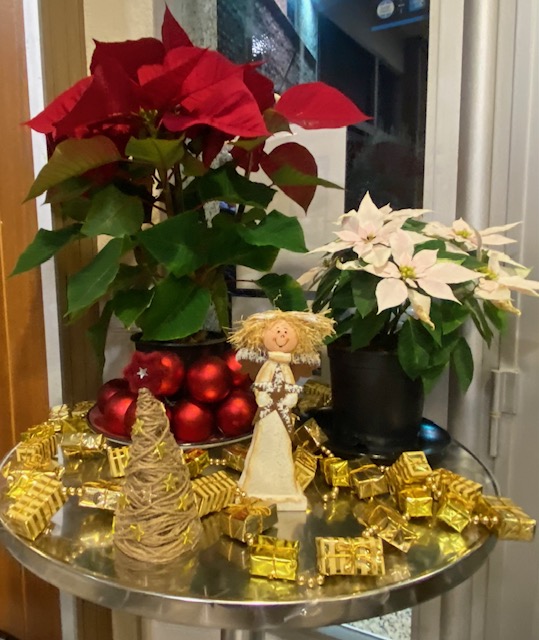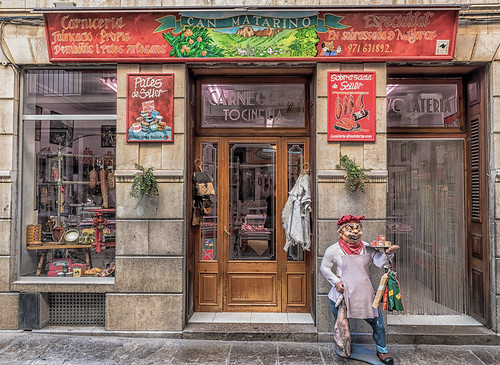The Soller Valley is a stunning area nestled in the Tramuntana Mountains. Soller is an Arabic name meaning ‘golden bowl’ in reference to the masses of Oranges grown in the region. Shirley Roberts writes a brilliant weekly column on Soller for the Bulletin covering many interesting topics. I am not looking to steal the limelight here, but rather to look at the birds and wildlife of the region. I always enjoy reading Shirley’s column which takes me back there each time. For me, a walk around Cuber Reservoir is finished off nicely with a drive along the twisting mountain road into Soller. The vista of the valley and its large town awaits you, with tantalising views through the gaps of the Pines as you descend down the road, but always on the bends where you dare not stop for a quick photo. The drive down eventually brings you to the town, where after parking up, one can walk into the Square, with the hustle and bustle of locals and visitors alike taking advantage of the many bars and restaurants where an ice cold beer or a coffee awaits.
Walkers that have made the journey from the mountains into the town share the same eating establishments as the cyclists, all enjoying a well-earned break and some food. The drive down from Cuber has already seen me watching raptors over the valley below, usually a Booted Eagleor Red Kite, but occasionally a Peregrine or Hobby makes an appearance using the warm thermals rising up from the valley floor. The order of the day is always the same, a beer or coffee depending on the mood, followed by taking the local tram (of the old San Francisco stock) down to Port de Soller. This delightful tram ride takes you through the heart of Soller, crossing roads where the local children stop to wave as you pass by, and alongside groves of Lemons and Oranges, always giving you that sneaky thought of wanting to reach out and grab one secretly as you pass slowly by. I never do of course.
The harbour in the Port is always alive with bird life, and the first to be seen are usually the Cormorants and Yellow-legged Gulls out on the water, with Shags occupying the exposed rocks, sometimes joined by Sandwich Terns. Occasionally the delicate looking Audouin’s Gull passes slowly but purposefully by, drifting along on the warm thermals of the sea and over the rocks beyond. Sometimes the peace is broken by the alarm calls from the feral Pigeonsas a Peregrine drops in hoping for its lunch Soller style.
The high ridges that surround Soller, give off cool thermals ideal for the raptors to soar on, with occasional wing beats just to give them that little boost along. Black Vultures can be seen over these ridges along with Griffon Vulturesand if you are lucky, the pair of EgyptianVultures that frequent the Tramuntanas. Over the years I have also seen Black Stork, Bonelli’s Eagle and Golden Eagle over these ridge tops, with Bee Eaters migrating overhead in vast numbers, their presence given away by their ‘bubbling’ calls. Get closer to the ridges and you will inevitably see both Crag Martins and Blue Rock Thrush.
After exploring the port there is the return ride on the tram, past those fruit groves again. I still haven’t pinched one. There are always birds flitting about in the many groves, particularly House Sparrows, Chaffinches and Greenfinches, but occasionally a Firecrest will show off the flash of red on its head as it feeds, and Nightingalessinging from within the groves add a beautiful song to a beautiful landscape – the two seem to go hand in hand. Someone always has a little fire going so you get that lovely smell of wood smoke in the air.
Evening time in Soller is a magical time. On a few occasions I have stayed until early evening before heading back, and Soller is indeed a beautiful town, full of character and charm. I can certainly see why it is a favourite destination to visit, and why people chose to live there. The screams of Common Swifts fill the air around the Square as they twist and turn over the houses. But all good things must come to an end, and soon enough I have to drag myself away for the drive back to base. A night drive back from Soller along the dark mountain road always sees a set of eyes appear in the distance. Sometimes they are the inquisitive eyes of the local Goats and on other occasions, the eyes of a Garden Dormice, scurrying off the road at the last minute, or a Pine Marten that can move at an amazing pace when it has to.
A drive back sometimes gives you a Nightjarat the road side taking advantage of Moths attracted by car headlights, and Red-legged Partridges form little roadside coveys. The Pines always give a tantalising call of a Scops Owl as you drive past, or a Nightingalesinging its heart out. There are many birds to see in the Soller valley, but the Shag is the one species that always sees me peering back into its green eye, wondering what they are thinking when they stare back at you, and in the harbour you can get very close to them, therefore my chosen bird of the week.
Bird of the week on Majorca – the Shag
A breeding resident on Majorca and although a predominantly dark coloured bird, they have an alluring bright green eye. A more maritime bird, they favour deeper waters with rocky coasts. They tend to stay faithful to the area where they nest. Head and neck rubbing courtships can be seen in early spring which although lovely to watch, can be amusing too. They cleverly try to nest when the fish stocks are at their most productive.
The voice comprises of a series of clicks and grunts. They are quite a large bird at 65-80cm in length with a wingspan of 90-105cm and a weight of 1.8-1.9kg. Rocky coasts form the majority of their habitat but they will venture into bays. A sheltered rocky ledge makes an ideal site for a nest comprising of an untidy heap of seaweed and other vegetation where three pale-blue eggs are laid. Herring and Sand Eels form the bulk of their diet. The young take around 53 days to fledge and are fed for several weeks thereafter.
They are smaller than their cousin the Cormorant and seldom share the same habitat. They are in my opinion a prettier bird, with a more delicate face. The sexes are similar. When seen close in, breeding birds have an oily-green plumage. The dark bill has a yellow gape (no white on the face as in the Cormorant), and an upturned crest adjourns the head – the yellow gape and crest are excellent ID features. They have a bottle green piercing eye.
The whole plumage takes on a sheen and an almost scalloped look, quite reptilian when seen very close up. In winter the crest and the sheen are less obvious. The Lore’s (chin area) are feathered on the Shag. In flight, the Shag has shorter and rounded wings and faster wingbeats – a good ID feature even when seen flying far out at sea.
Like a lot of birds, they don’t necessarily have bright colours, but what the Shag may lack in colour it certainly makes up for the inquisitive bright green eye, glossy green plumage and a crest that looks like it has tried some new hair gel. It is a nice bird in its own way and worthy of being bird of the week.
Wild Majorca
By Neville James Davies
Contact: wildmajorca@gmail.com www.ecologycymru.co.uk @ecology_cymru
Majorca Daily Bulletin
Palau de la Puensa
Passeig Mallorca 9-A
07011 Palma
34 971 78 84 10
The Golden Bowl. – Published in the Majorca Daily Bulletin on Saturday 24th February 2018
Photo by: Neville James-Davies.










